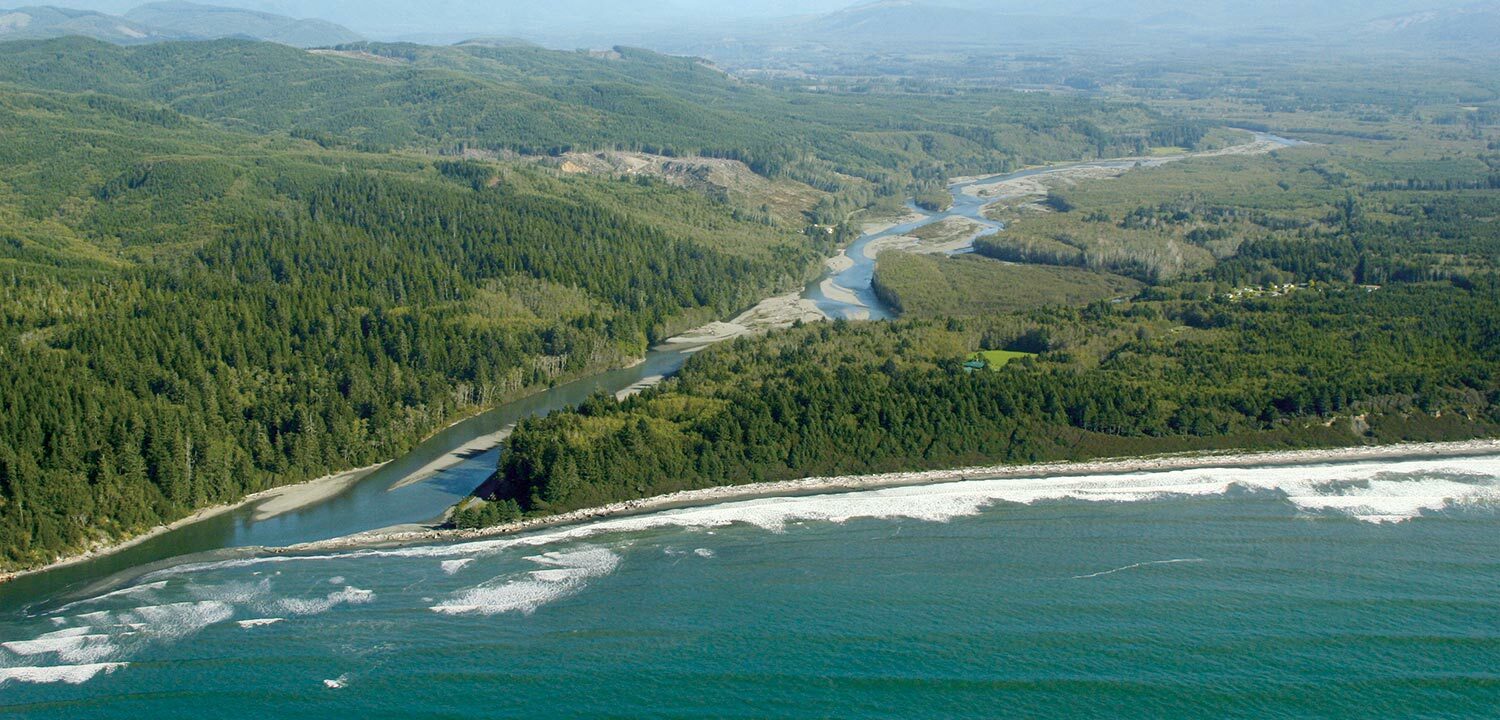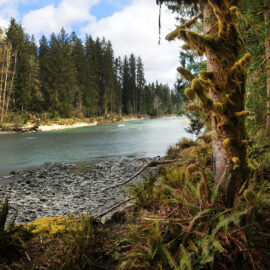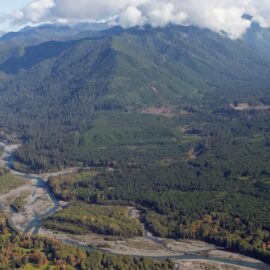Notes from the Field: Floating a Washington Coast stronghold, now protected from source to sea.
By Devona Ensmenger
In early July, the Hoh River flowed greenish grey and cold through 10,000 acres of protected lowland forest on its way to the sea. As WSC staff and our guests from the Harder Foundation bumped along 14 miles of Class 2 rapids and gentle riffles, elk waded in to drink, eagles whirled overhead, and tiny coho and steelhead fry hid at the edges of the channels. As this hot summer bleeds into fall, the glacially fed Hoh and other cold coastal rivers like it will continue to act as refuges for salmon, helped by the shade of recovering fir, spruce, and hemlock stands on the lower river. The Hoh is teeming with life. Though it still registers a fraction of its historical abundance, it’s recovering.
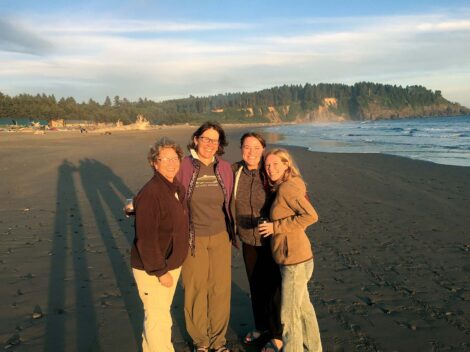
Ten years ago, it was a different story. While the headwaters of the Hoh were protected—and still are—in national park land, 30 miles of the lower river were a patchwork of cutover logging lands. The habitat of one of Washington’s and the Lower 48’s best salmon rivers was in jeopardy—a place where the coho runs are strong and large 20 pound steelhead make it one of the best steelhead fishing rivers south of Canada.
In 2004, Western Rivers Conservancy and Wild Salmon Center recognized the need for greater salmon habitat conservation on the lower Hoh and formed the Hoh River Trust. With early federal funds, the trust began buying riverside forestland parcels from willing sellers and putting them under permanent protection.
Local residents, including hunters and fishermen, were initially wary of a conservation group taking control of lands along the river, which are prime game lands. Previous landowners had plastered No Trespassing signs on Hoh properties. But the director of the trust, Mike Hagen, opened up trust lands to hunting and fishing and would often wake at dawn to open gates to let people onto the land. The trust also agreed to pay taxes on the land to support local governments and infrastructure.
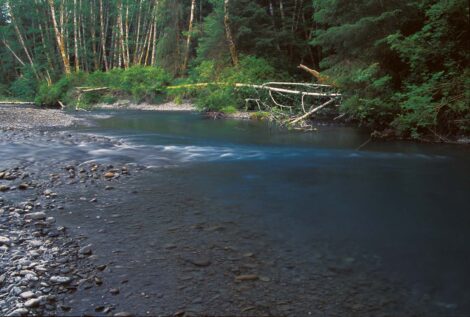
Soon after the trust formed, Harder Foundation’s executive director, Kay Treakle, convinced the foundation to invest in coastal restoration and protection, including on the Hoh River. Seattle-area foundations had traditionally neglected the Washington Coast, but Treakle was a lifelong lover of the coast, having vacationed there as a child and returned many times as a hiker and birder. She has made a compelling case to her board for protecting and restoring the unique ecology of the coast—the temperate rainforests that produce 500 tons of living organisms per acre. Harder Foundation has continued to support our work on the coast through the last decade. And now, Treakle has another key ally in support of coastal conservation with John Drigger as president of the foundation’s board.
Harder’s steadfast support over the years on the Hoh helped draw other investors such as The Nature Conservancy, which began to negotiate the purchase of additional private forestlands along the river corridor. All told, the Hoh River Trust has protected about 7,000 acres, with The Nature Conservancy adding 3,000—helping meet the 10,000 acres goal set ten years ago at the establishment of the trust.
There is still more work to be done. To get more fish upstream to cold water and spawning grounds, we must remove many of the 220 man-made barriers in the watershed and also reduce coho harvest, which federal officials say is unsustainable.
But the proactive work of the trust on the Hoh has helped keep its salmon and steelhead runs off the Endangered Species List. And our wider strategy with partners on the Washington Coast to invest while rivers and salmon are relatively healthy has been adopted by Washington’s governor and legislature with $11.2 million allocated for restoration on the Washington Coast.
Washington Coast rivers, home to the best collection of salmon runs in the Lower 48, are all about to get greater attention in those important low-lying lands most in need of restoration.
